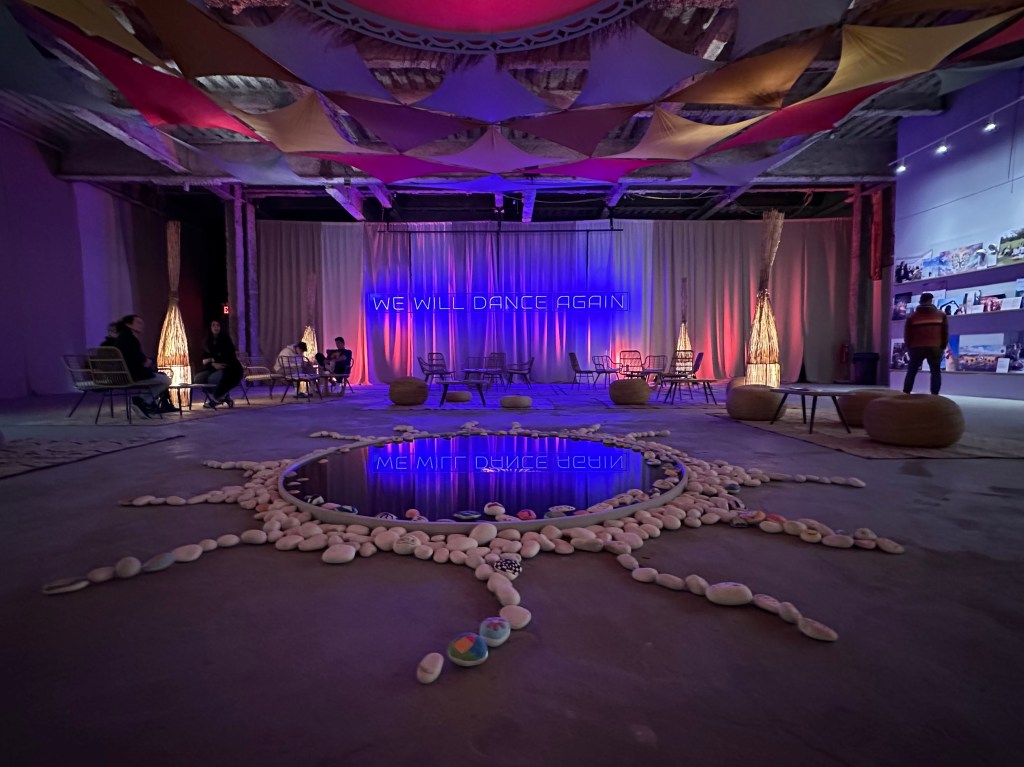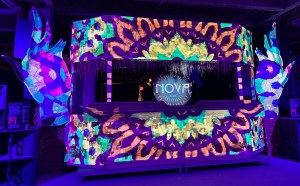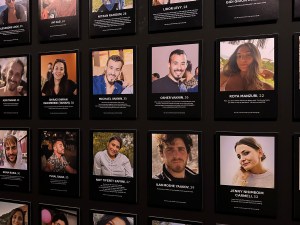
What’s happening on college campuses across the country right now is nothing short of disgusting and distressing. Thousands of students — and faculty members, too — are protesting and creating encampments in support of the Palestinian people.
Or so they say.
Make no mistake: These protests are not pro-Palestinian. They’re not even anti-war. They’re anti-Israel, and increasingly, they’re simply anti-Jew and anti-America. If these protests are “pro” anything, they’re in support of a terrorist organization that murdered 1,200 innocent people and kidnapped more than 250 others on October 7, and that has vowed to do it again and again and again until Israel and the Jewish people are eliminated from the face of the Earth. They’re in support of an organization that brutally raped women (and probably men, too), and that mutilated, beheaded, tortured, and/or burned babies and elderly people. And that did all this with glee, documenting it with their own cameras and celebrating it with their parents and so-called “innocent” civilians. The same organization that steals humanitarian aid and uses actual innocent civilians as human shields. (And that lies and is inflating the casualty count, too, by the way.)
By chanting catchy slogans like “From the river to the sea” and “Globalize the Intifada,” among others, whether they realize it or not, the people at these so-called “peaceful” campus gatherings are calling for even more of this type of violence — actual genocide — when they’re not being violent, that is. Multiple photos and videos have shown Jews and allies being assaulted, pushed to the ground, screamed at, stabbed in the eye, harassed, threatened, and more. Maybe the people who are doing these things aren’t affiliated with the schools. But the point remains: These protests are hardly what anyone would or should call “peaceful.”
No wonder the terrorists have endorsed them. And no wonder Jewish students at Columbia have been given the option to attend the semester’s remaining classes virtually or advised to leave campus altogether; it’s not safe for them right now.
For the rest of us, it’s been another period of shock. Since October 7, I’ve been astonished by just how many people support terrorists (and by extension, by the lack of moral support Jews and the State of Israel have received), annoyed by the biased media coverage that keeps giving those terrorists and their supporters the benefit of the doubt but always challenges Israel, confused by my “political homelessness” (this great interview with the current Speaker of the House is a case in point), and disappointed by just how few people are willing to speak publicly to support our community — particularly the silence from those who are part of our community. I’m also saddened by how few people are calling for the return of the remaining 133 hostages still being held in Gaza after more than 200 days. Now, the same week we celebrate Passover and our liberation from slavery in Egypt, these latest protests have taken things up a notch and made me feel more frustrated and even more defiant about the war and about being Jewish, just in general.
And so it was with this mindset that I visited the Nova Music Festival Exhibition in New York City last weekend.
The Moment Music Stood Still
Nova, if you don’t know, was a rave in the Israeli desert that took place on Friday, October 6–7, 2023. Like at Coachella, Bonnaroo, or most any other music festival, the 3,882 attendees at Nova danced, sang, and celebrated life. And then, at sunrise on Saturday morning, October 7, the legitimately peaceful gathering was brutally interrupted when armed terrorists invaded Israel. In addition to attacking multiple kibbutzim, they attacked the festival grounds, killing 364 attendees, kidnapping 40 of them, and wounding hundreds more.
The exhibit that opened on October 21 is similar to the one that opened in Israel at the end of last year. It’s a tribute to the “Tribe of Nova” that’s composed almost entirely of actual items that were left behind by attendees when they began to flee at 6:29 a.m. that morning — a.k.a. the Moment Music Stood Still — and it recreates the scene to put you right in the middle of the chaos that ensued. The artifacts are augmented by video interviews with first responders, survivors, and parents of victims.
It’s not an easy visit by any stretch, but it’s an impactful and effective exhibit, and I’ll admit that I came away from it feeling angrier about what happened that day and in the 200 days since, and even more of a kinship with the victims.
An Unmistakable Sense of Fear
When you first enter the exhibit, after watching a short video that contextualizes the festival and the mood of attendees before the attack, you’re immediately dropped into the scene at 6:29 a.m. It’s dark. The ground is sandy like it was in Re’im, where the festival took place. (And yes, that’s actual dirt from the festival site you’re walking on.) Tents have been abandoned and belongings are strewn everywhere. And it’s loud. Very loud.
The sounds you hear are clips of actual footage recorded that day by the terrorists themselves, which are playing on screens all around the room. You see them on motorcycles, carrying assault weapons, and screaming “Allahu Akbar!” as they enter the gates of the festival grounds. You see them attacking the festival grounds. You hear the gunshots. So many gunshots.
Interspersed among this scene are cell phone recordings from frightened attendees calling their parents. You also see selfie video recordings of attendees taken from recovered cell phones. These people were hiding and hoping they wouldn’t be discovered, the unmistakable sense of fear all over their face.
And these sights and sounds are on a constant loop, playing over and over and over. I know the effect seeing and hearing them had on me just walking through and pausing for a couple minutes at various points, but I don’t know how the security guards and staff are able to stand being in that room and hearing those sounds for any prolonged period of time.
A staff member told me later that this opening section wasn’t part of the original exhibit in Tel Aviv. I can understand why: It’s definitely intense, and it was unnecessary for the Israelis to experience the massacre in this way, given that they had already lived through it, and many visitors probably knew someone who had been at the festival. Americans, who have not been as exposed to what happened, need this experience more. It’s haunting. Horrific. Unforgettable.
This section of the exhibit also includes a room where you can watch testimonies of first responders from ZAKA about the trauma they experienced and the pain they still feel. And then you move into another room and you see the actual burned-out cars that were recovered and the actual port-a-potties with bullet holes in them, and it’s hard not to feel rage for the monsters who did all this and the protesters around the world who think it was justified — including all those college students occupying their campus quad just across town. How could anyone think any of this carnage was justified? Who would support these savages?
They Lived and They Loved
But the Nova exhibit has two purposes: One is to show visitors what happened that tragic morning, and the other is to remind us of who the victims were. To help accomplish that latter goal, at various points in the exhibit, there are video testimonies from victims’ family members. One notable one was from Sigal Manzuri, whose two daughters, Norelle and Roya, were killed on October 7. In describing what she’s lost, Manzuri says, “I won’t be their children’s grandmother,” and that line hit me hard. Imagine that feeling. That loss.
Elsewhere, there is a “Lost & Found” area with shoes, bags, clothes, cell phones, sunglasses, hats, and other items recovered at the festival site. It’s reminiscent of the kind of thing you’d see in a Holocaust museum. I was struck by some of the things people brought with them to Nova, such as a clapboard from Disney’s Hollywood Studios. Some of the items — pieces of jewelry, for example — were found on bodies of the terrorists. Every item has been catalogued, and it’s hoped that at least some of the items will be reunited with their owners or their owners’ families. The chances of that happening are slim, but not impossible. In fact, the staff member I mentioned earlier told me the story of how one visitor to the exhibit found his missing shoe in the collection.
One of the most striking things about the Nova exhibit is that, when you first walk in, there’s a sign posted that encourages you to “please touch” everything you see. For example, “Please pick up the cell phones and watch the videos.” It felt weird to me to touch another person’s stuff, especially in this context, especially knowing that people might want to claim them one day, but the point is powerful: These items belonged to victims, survivors, and hostages. Real people owned all of these things. Touching the items makes them less museum-exhibit-like and makes these people and the tragedy more real.
This reality is emphasized even more toward the end of the exhibit, when you enter a memorial room in which there is a photo of each attendee who was killed, along with a brief tribute. You learn about their passions, their families, their jobs … their lives.
On the day I visited the Nova exhibit, Hannie Ricardo, the mother of Oriya Litman Ricardo, was staffing this room and was generously speaking about her daughter with anyone who engaged her. Oriya was the youngest of Ricardo’s three daughters. She told us about the last time she spoke with Oriya, about her daughter’s plans to get married, about who was with Oriya at “the party,” and more. Ricardo got out her own cell phone and showed us more photos of Oriya. She encouraged us to go around the room and to pick one or two people and keep them in our hearts, maybe reach out to their families if we felt comfortable. The photos of two identical twins, Michael Vaknin and Osher Vaknin, caught my eye, and despite not looking anything like my own redheaded identical-twin nephews, I chose them.
And then, as a group of us were about to move on, Ricardo said, “I’m here to let people know that these kids didn’t just die. They lived. They lived and they loved.”
Those are the words that have stayed with me about this entire exhibit: These kids didn’t just die. They lived and they loved.
We Will Dance Again
If visitors to the Nova Music Festival Exhibition come away with one thing, I hope it’s this: They should remember that the 404 people who were killed or kidnapped in Re’im that tragic day were not a number. They were actual people. Individuals. Innocent people who just wanted to celebrate life and peace, and to dance.
Innocent people whose memories will live on and will forever be a blessing.
I think about Norelle, Roya, Oriya, Michael, Osher, and their parents when I see all these protesters around the country disrupting their campuses to support the terrorist monsters who perpetrated this massacre and who call for a repeat of October 7 until their work is done. It’s infuriating and it’s painful, to say the least.
We read in the Haggadah earlier this week, in the Vehi Sheamda prayer, “In every generation, they rise up to destroy us.” Our enemies are legitimately trying to do that right now.
But this much I know: All this craziness, all these threats, all this pain and anger we’re feeling … This, too, shall pass. It always does. More importantly, as the Tribe of Nova motto states: We will dance again. Yes, we will. One day, we will dance — without disruption or fear — for all those we lost on October 7. That day can’t come soon enough.
Am Yisrael Chai.
The Nova Music Festival Exhibition opened in New York City on April 21 and is currently scheduled to be open for five weeks, closing on May 23. You can purchase advance tickets here. (And no, I was not compensated for this blog post.)





What say you? Leave a comment here.